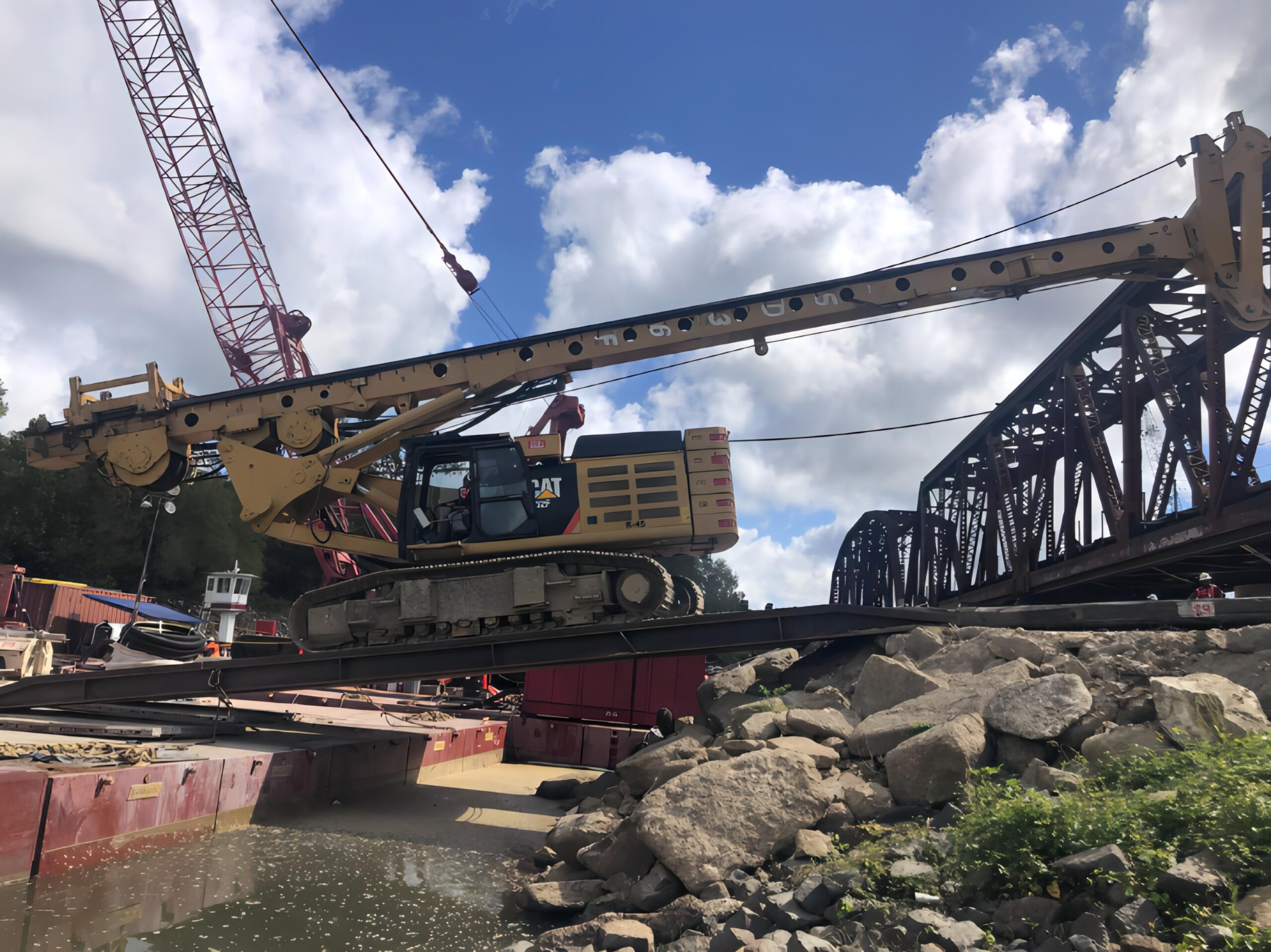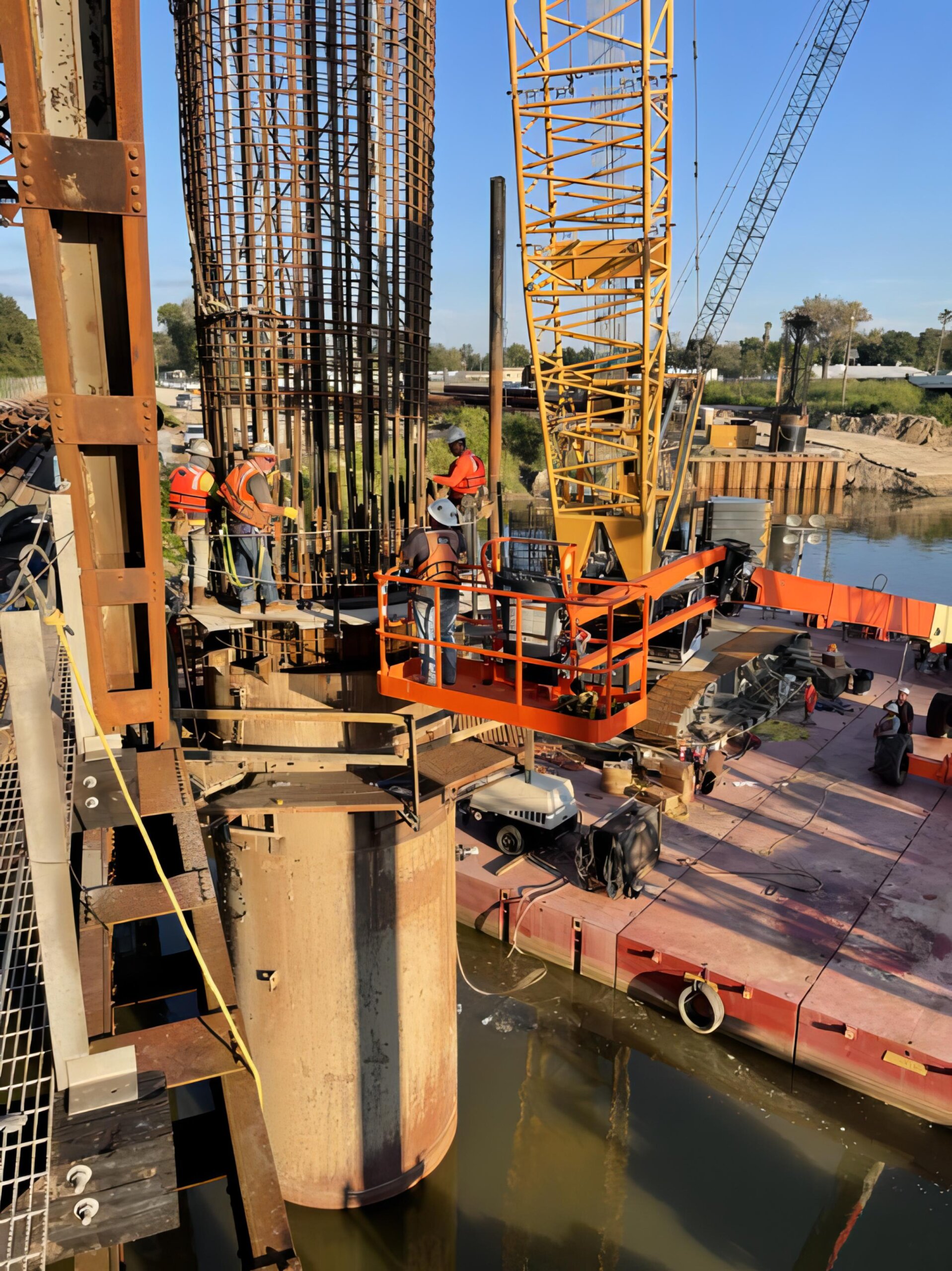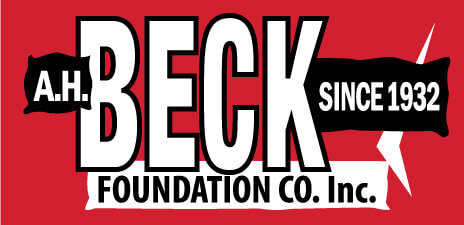A.H. Beck was contracted to install foundations for replacement of the UPRR bridge over the Trinity River, using drilled shafts all the way up to 216 feet deep.
A.H. Beck was contracted to install the foundations for the replacement of the UPRR bridge over the Trinity River. The replacement of the bridge required the installation of eight drilled shafts. The abutment shafts consist of four foot diameter by 115 to 145feet deep shafts which were permanently cased down approximately 45feet. The main spans consisted of four 10 foot diameter by 216 foot deep shafts in the river and were permanently cased approximately 90 to 100 feet below the water surface. The river proposed challenges as the height of the river could change twenty feet in a matter of hours. As the casings are not installed full-depth, and given the high water-table, soft clays, and loose sandy soils present on the project, the drilled shafts were installed using bentonite slurry displacement method to maintain hole stability and shaft integrity below the casing. All shafts were installed with non-destructive testing equipment and were tested with Cross Hole Sonic Logging and Thermal Integrity Profile. The installation of the foundations were also complicated by the discovery of an old draw span bridge foundation that effected two of the 10 foot diameter shafts. A.H. Beck to help remove the old stone foundations implemented a process of running sectional casing down through the obstructions to a depth of 100 feet and drilling inside the sectional casing to break through the obstructions.




